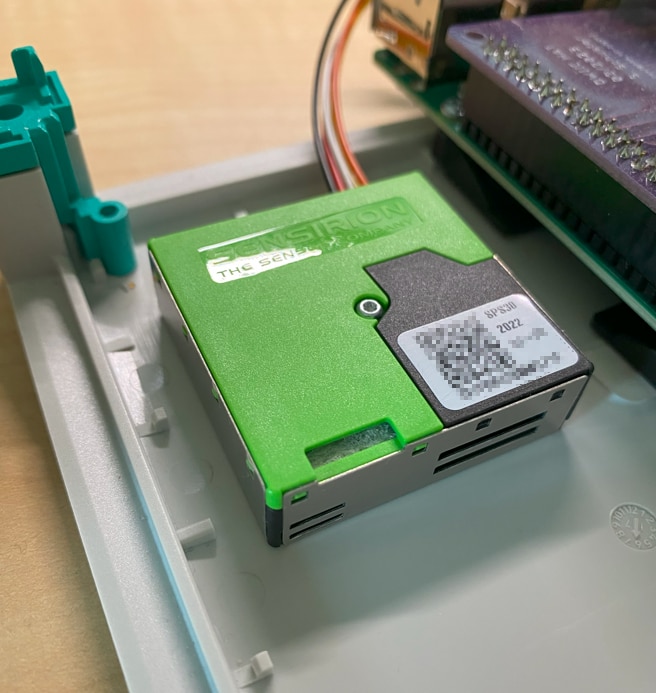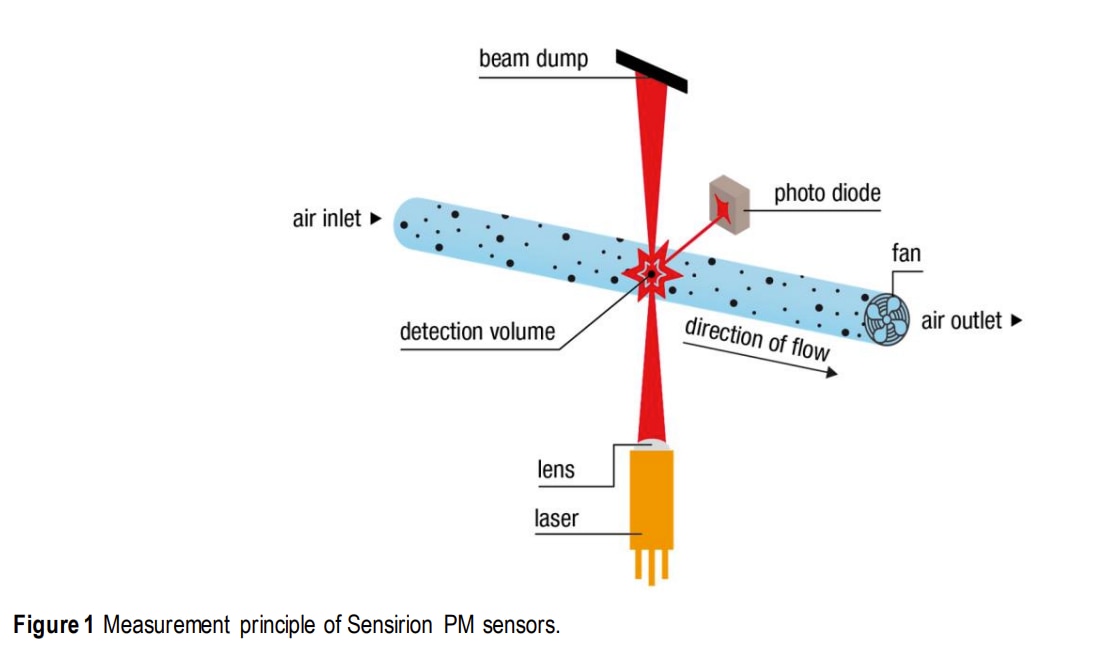Overview
In the second part, we look at the SPS30 fine dust sensor from Sensirion. In doing so, we look at the measurement principle, the connector, and the most important sensor features and there is a digression into the WHO recommendations on fine dust to conclude.

Measuring principle

"Sensirion Particulate Matter (PM) sensors are optical particle counters (OPCs) based on laser scattering. All OPCs guide ambient, suspended particles to a measurement cell inside the device. The measurement cell consists of a light source (e.g., a laser) and a photodetector. Due to the interaction of particles and light, part of the incoming light is scattered towards the nearby photodetector. [...] The collected signal is converted into real-time particle count and mass concentration values, respectively given in #/cm3 and in μg/m3." (Text and Image Source from Sensirion - Sensirion_Particulate_Matter_AppNotes_Specification_Statement.pdf)
Connector plug

(Image Source from Sensirion SPS30 Datasheet - Sensirion_PM_Sensors_Datasheet_SPS30.pdf)
The sensor connection is made via a 5-pin JST connector, connecting the power supply and the data interfaces (either I2C or UART).
Hint: it's best to order a suitable pre-assembled cable
Since I'm pretty bad at crimping, therefore I have constructed a small HAT adapter board, which also solves the problem with the I2C pullup resistors and connects the sensor to the Raspberry Pi. We will have a closer look at this in the next blog post.
Back to the sensor, here I have put together an overview of the most important sensor features:
Sensor Features Overview
- Manufacturer: Sensirion
- Part Number: SPS30
- Operating temperature: -10°C to + 60°C
- Supply voltage: +4.5 V to +5.5 V
- Rated current: 60 mA to 80 mA
- Interfaces: I2C or UART
- Size (LxWxH) 41 x 41 x 12 mm³
- -----------------------
- Measuring principle: Laser-based scattering principle
- Accuracy of mass concentration ±10
- Range of mass concentration 0 - 1000 μg/m³
- lifetime > 10 years
- Range of particle size PM1.0, PM2.5, PM4 and PM10
- -----------------------
- Price: approx. 45€
Further documentation
On the manufacturer's webpage we can find further documents about the SPS30 sensor:
https://sensirion.com/products/catalog/SPS30
WHO recommendation
As a small digression, we want to look at the limit values for fine dust from the WHO. In a later experiment, we want to check if the outdoor air in my neighbourhood meets the WHO recommendation.
The WHO recommendation for long-term exposure to fine dust PM2.5 is now 5 instead of 10 micrograms per cubic meter of air (EU limit 25 micrograms per cubic meter of air), and the recommendation for fine dust PM10 is 15 instead of 20 micrograms per cubic meter of air (EU limit 40 micrograms per cubic meter of air).
(Sources: https://www.sciencemediacenter.de/alle-angebote/research-in-context/details/news/aktualisierte-who-leitlinie-zur-luftqualitaet/ and https://apps.who.int/iris/rest/bitstreams/1380367/retrieve )
In the third part, we will take a closer look at the Interface PCB: Link

Top Comments
-

DAB
-
Cancel
-
Vote Up
0
Vote Down
-
-
Sign in to reply
-
More
-
Cancel
Comment-

DAB
-
Cancel
-
Vote Up
0
Vote Down
-
-
Sign in to reply
-
More
-
Cancel
Children